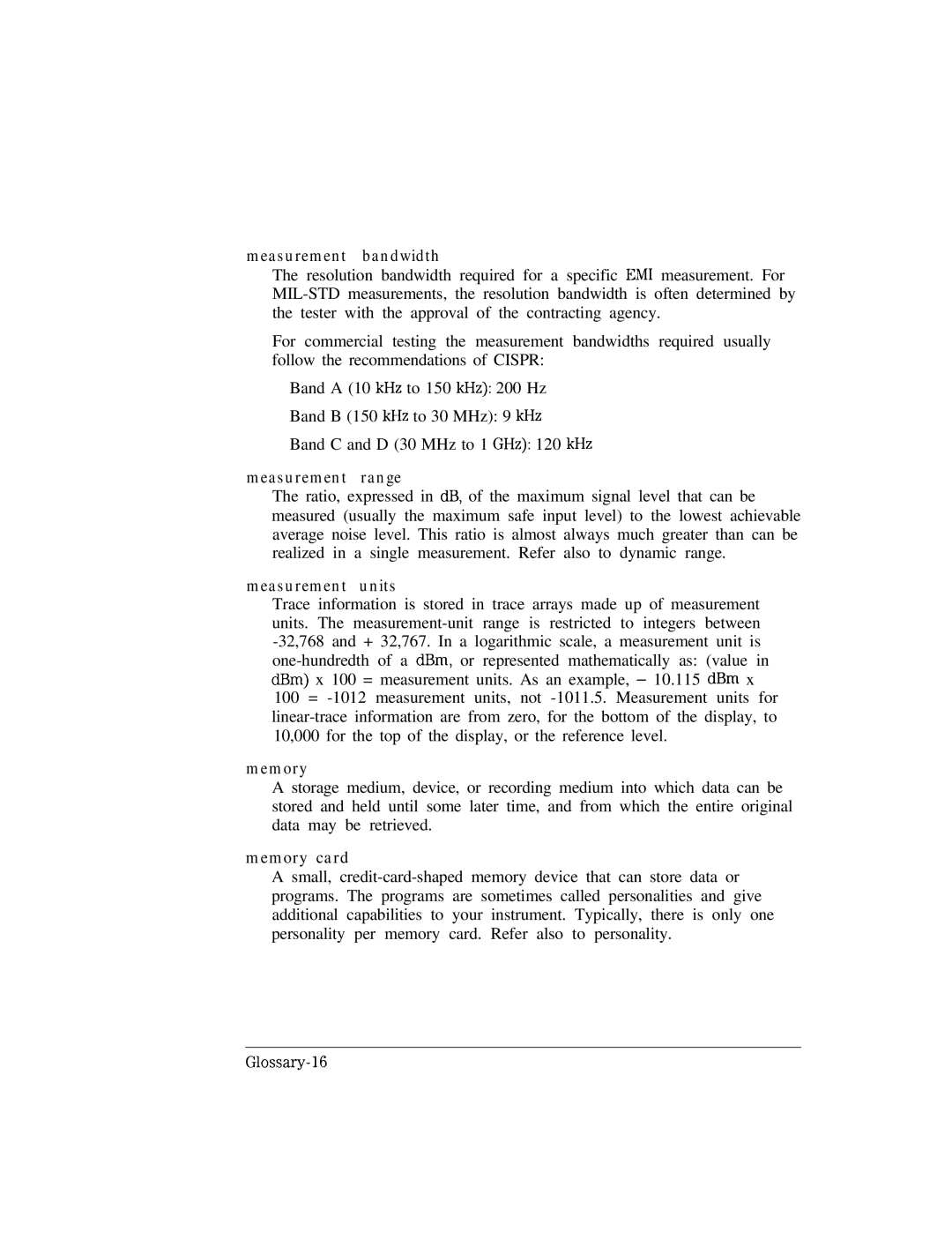
measurement bandwidth
The resolution bandwidth required for a specific EM1 measurement. For
For commercial testing the measurement bandwidths required usually follow the recommendations of CISPR:
Band A (10 kHz to 150 kHz): 200 Hz
Band B (150 kHz to 30 MHz): 9 kHz
Band C and D (30 MHz to 1 GHz): 120 kHz
measurement range
The ratio, expressed in dB, of the maximum signal level that can be measured (usually the maximum safe input level) to the lowest achievable average noise level. This ratio is almost always much greater than can be realized in a single measurement. Refer also to dynamic range.
measurement units
Trace information is stored in trace arrays made up of measurement units. The
memory
A storage medium, device, or recording medium into which data can be stored and held until some later time, and from which the entire original data may be retrieved.
memory card
A small,
